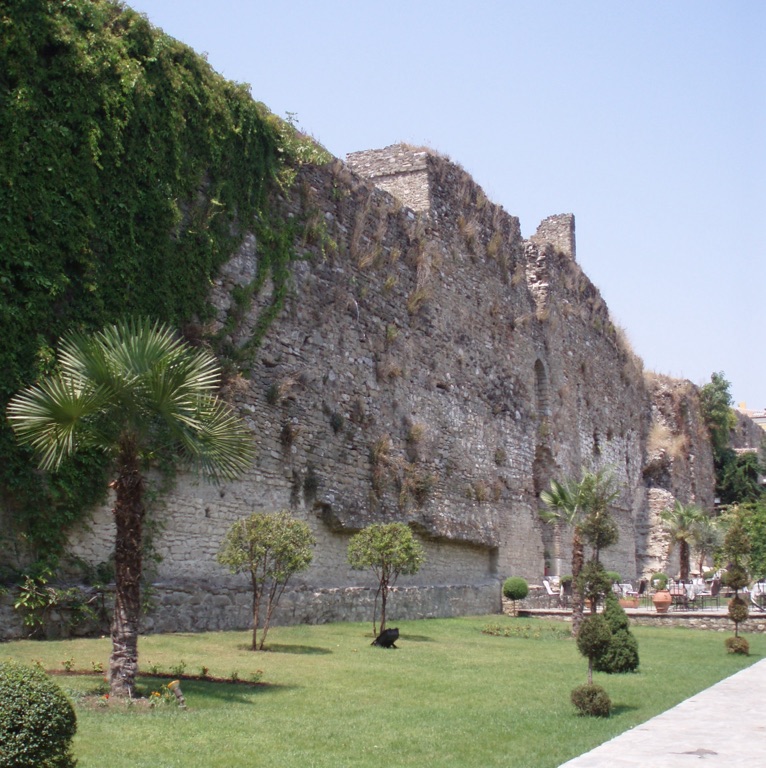Elbasan Castle is a historical fortress located in the city of Elbasan, Albania. It stands as a testament to the country’s rich past, showcasing centuries of architectural and cultural evolution. The castle’s origins date back to the Roman period, but it gained prominence in the 15th century when it was reconstructed by the Ottoman Empire. Over the years, Elbasan Castle has witnessed numerous historical events and has undergone various transformations, reflecting the diverse influences that have shaped Albania’s history.
Get your dose of History via Email
Historical Background of Elbasan Castle
The discovery of Elbasan Castle is intertwined with the history of the city itself. Elbasan, formerly known as Scampa, was an important Roman and Byzantine stronghold. The Ottomans, led by Sultan Mehmed II, rebuilt the castle in 1466. They constructed it on the foundations of an older fortress, using it to consolidate their power in the region. The castle’s strategic location made it a focal point for military and trade activities.
The castle was built by skilled Ottoman architects who designed it to serve as a military garrison and urban center. Its walls enclosed a significant area, including houses, mosques, and baths. The castle’s design reflected the typical Ottoman fortification style of the period, with high walls and towers for defense.
Throughout its history, Elbasan Castle has been inhabited by various occupants. After the Ottomans, it served as a base for local rulers and military forces. The castle has also been the scene of several historically important events, particularly during the struggles against Ottoman rule and later during World War II.
In the 20th century, Elbasan Castle underwent restoration efforts to preserve its historical value. These efforts have allowed the castle to remain a significant cultural and tourist attraction. Today, it hosts cultural events and festivals, celebrating the city’s heritage.
The castle’s historical importance is not only due to its architecture but also because of its role in Albania’s narrative. It has been a silent witness to the ebb and flow of empires and has stood resiliently through the country’s tumultuous history.
About Elbasan Castle
Elbasan Castle is a remarkable structure with a rich architectural heritage. The castle’s walls, made of stone and mortar, have withstood the test of time. They encircle an area that once bustled with daily life in a thriving urban center. The main gate, known as the Imperial Gate, still stands as a grand entrance to the castle’s interior.
The castle’s layout is typical of Ottoman military architecture, with a quadrangular shape and towers positioned at strategic points. Inside the walls, one can find remnants of public buildings, religious structures, and houses. These structures reflect the various periods of the castle’s occupation, from Ottoman to modern times.
One of the architectural highlights of Elbasan Castle is the Sultan’s Mosque. It is a prime example of Ottoman religious architecture within the castle’s confines. The mosque, along with the remaining baths and public buildings, provides insight into the daily lives of those who lived within the castle walls.
The methods of construction and building materials used for Elbasan Castle were typical of the period. The Ottomans employed local stone and traditional building techniques to create a fortress that was both formidable and functional. The castle’s design allowed for effective defense against invaders while also accommodating the needs of its inhabitants.
Today, Elbasan Castle is not only a historical monument but also a cultural hub. It has been partially adapted to host events and serve as a public space for the local community. This adaptation has been carried out with respect for the castle’s historical and architectural significance.
Theories and Interpretations
Several theories exist about the original use of Elbasan Castle. Most historians agree that it served as a military stronghold and administrative center. However, some suggest it may have also been a royal residence or a trading hub due to its strategic location.
There are mysteries surrounding certain aspects of the castle, such as the original extent of its fortifications and the full range of activities that took place within its walls. Archaeological excavations and historical records have provided some answers, but much is left to interpretation.
The castle’s history has been pieced together through a combination of architectural analysis and historical documentation. This has allowed historians to match certain features of the castle with known historical events and periods.
Dating of the castle’s construction and subsequent modifications has been carried out using various methods. These include architectural typology, historical records, and, in some cases, carbon dating of organic materials found on the site.
The interpretations of Elbasan Castle’s history continue to evolve as new discoveries are made. Each finding adds a layer of understanding to the castle’s past and its role in Albanian history.
At a glance
Country: Albania
Civilization: Ottoman Empire
Age: Originally Roman period, reconstructed in 1466 AD
Conclusion and Sources
The information provided in this article about Elbasan Castle has been sourced from reputable and authoritative sources to ensure accuracy and reliability. These sources include:

